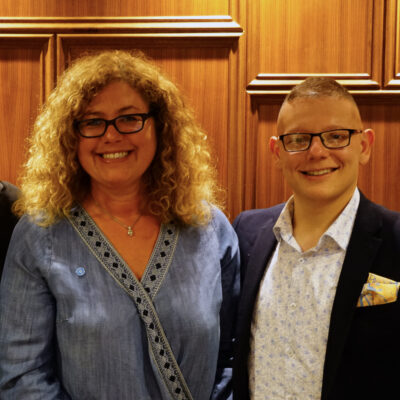At the last Profit With Purpose event we heard from four social entrepreneurs with different levels of experience running a social enterprise. And they all had something to say about funding.
Hayley Binstead is the Managing Director of Board in the City CIC, a board game cafe that acts as a conduit for those with barriers to employment to re-enter the workforce. If she were starting again, she would change the structure of the company.
“We started in 2016 as a CIC but we were also a company limited by shares because we sold our house to do this. It was probably the worst mistake we have ever made. When you go for grant applications, people consider that you have a sense of entitlement,” said Hayley.
Harry George, Managing Director of SEND Coffee, which trains those with special educational needs as baristas, is also not a fan due to his experience starting a previous social enterprise.
“We formed it as a company limited by shares to attract investors but it was a terrible, terrible mistake. We had to choose between impact and our obligations to those investors and the latter kept winning. And that made me unhappy,” said Harry.
Of the 24,000 community interest companies registered with the regulator since 2005, only 4,000 are companies limited by shares at the time of writing.
Social investment information provider Good Finance partnered with Anthony Collins to create Legal Structures at a Glance as a guide for social enterprises and charities to understand how investment pros and cons are relative to the full range of governance structures.
“The requirement to sell shares to realise an external investor’s money might be seen to compromise a social enterprise’s mission or purpose. This is a conundrum that the sector is well aware of and there is a product gap for patient, risk bearing, capital that can act like equity (but isn’t),” said Melanie Mills, Social Sector Engagement Director at Big Society Capital.
She also points that there has been lots of discussion and research about this topic – most recently from Shift in their Beyond Demand report.
“There are fewer providers of this sort of capital, although some trusts and foundations like Comic Relief’s Red Shed and Sumerian Partners are examples of investors who do provide it,” said Melanie.
Another way to access money is partnering with organizations that are already tackling the same social problems, suggests Harry.
“Work with organisations that are looking to achieve outcomes you are looking to achieve. It’s easier to work with an existing organisation – they understand how to get that funding better than anyone,” said Harry.
Unless you’re working with someone that can manage the finances of your social enterprise, you might learn some hard lessons about balancing the books, according to Ruth Rogers, founder of The Canvas Cafe, a space where ideas that benefit the local community can grow.
“The first few years were nothing about creating a social enterprise, incubating new ideas, creating community cohesiveness, it was all about keeping the damn doors open,” said Ruth.
“I took on a lease, I took rent, I took on staff. It’s very expensive and I didn’t know enough about profit margins and cash flow. You need to get knowledgeable about that. Those are going to be the backbone of your business. You’ve got to hit the profit margins to enable everything else to be paid for.”
Ruth also used her home as leverage, remortgaging her home to support The Canvas Cafe financially. She started the business with the support of funding from the Beyond Business programme.
We regular convene social entrepreneurs to share what they know in an effort to grow the sector. If you’d like to come to our next Profit With Purpose event, sign up to our mailing list.
Image by PublicDomainPictures from Pixabay



